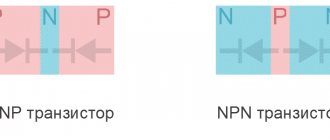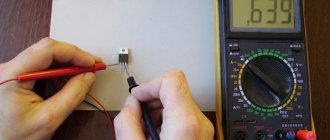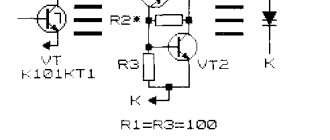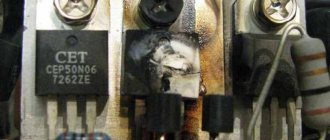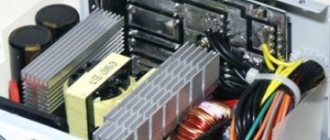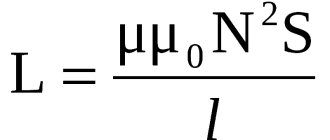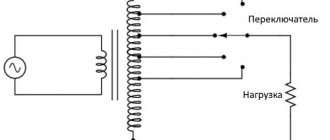Dawn of the Transistor
Transistors are semiconductor devices that perform two basic functions in an electronic circuit - an amplifier and a switch.
Before the era of the transistor, vacuum tubes were primarily used as an amplifier or switch in the first half of the twentieth century. However, high operating voltage requirements, high power consumption, and high heat output caused vacuum tubes to become inefficient and unreliable over time. Not to mention, these tubes are bulky and fragile because the body is made of glass. To solve this dilemma, various manufacturers have spent years of research in search of a suitable replacement. Finally, in December 1947, three physicists at Bell Laboratories successfully invented the first working transistor. John Bardeen, Walter Brattain, and William Shockley spent years of research to finally develop a working point-point transistor. In 1948, Shockley improved the device into a bipolar junction transistor, which was widely used in the 1950s. Their invention was so important that Bardeen, Brattain and Shockley were awarded the famous Nobel Prize in 1956.
Let's sum it up
- Bipolar transistors conduct current using both electrons and holes in the same device.
- The functioning of a bipolar transistor as a current amplifier requires that the collector-base junction be reverse biased, and the emitter-base junction must be forward biased.
- A transistor differs from a pair of back-to-back diodes in that the base (central layer) is very thin. This allows the majority charge carriers from the emitter to diffuse, as minority carriers, through the base into the depletion region of the base-collector junction, where they are picked up by a strong electric field.
- The efficiency of the emitter is improved by higher doping compared to the collector. Emitter efficiency: α = IC/IE, is 0.99 for low power transistors.
- Current gain: β=IC/IB, for low-power transistors ranges from 100 to 300.
Original article:
- Bipolar Junction Transistors
Evolution of transistors
Like any other device, transistors have undergone several innovations. Back in the late 1950s, germanium played a crucial role in the development of transistors. However, germanium-based transistors have serious disadvantages, such as current leakage and intolerance to temperatures above 75 °C. Additionally, germanium is rare and expensive. This prompted Bell Labs researchers to look for a better alternative.
Gordon Teal is a big name in the evolution of transistors. An American Bell Labs engineer, Teel developed a method for producing pure germanium crystals to be used in germanium-based transistors. Similarly, Teal experimented with silicon as a possible replacement for germanium. In 1953, he returned to Texas after being offered a position as director of research at Texas Instruments (TI). Using his experience and knowledge of semiconductor crystals, he continued to work on purified silicon as a replacement for germanium. In April 1954, Thiel and his team at TI developed the first silicon transistor, which was announced to the world in May of that year. Due to its superior characteristics, silicon has gradually replaced germanium as the semiconductor used for transistors.
Read 7 Social Media Marketing Tips 2022. SMM Trends You Need to Be Prepared For!
With the advent of silicon transistors, Bell Labs researchers achieved another breakthrough by developing a transistor that could outperform a bipolar junction transistor. In 1959, Mohamed Atallah and Dawon Kang invented the metal-oxide-semiconductor field-effect transistor (MOSFET) with lower power consumption and higher density than the bipolar transistor. These valuable characteristics significantly made the MOSFET, which has since become the most widely produced device in history.
The first domestic transistorsThe first serial domestic transistors, not counting the experimental KS1 - KS8 (1953), were point germanium pnp triodes C1 and C2 (1954 - 1960). The length of the case without leads is 12 mm, diameter is 6.5 mm. The length of the leads is 4 mm. Weight 2 g. Considering that the leads are very short, the weight of the transistor itself is quite impressive. For comparison, for example, MP40 transistors with long leads weigh only 1.5 g. The large weight of C1 and C2 is due to their design features. I sacrificed one of my existing C2 transistors to study its internals. After removing the outer case, it turned out that underneath there was a brass cylinder with a diameter of 6 mm, inside of which there was a germanium crystal. In the middle of the cylinder there are two technological holes with a diameter of 2.5 mm. The thickness of the cylinder wall in the hole area is 0.4 mm. The outer casing is made of an alloy similar to nickel. Details of many older transistors can be found here
Photos can be enlarged
A germanium crystal with contact conductors is visible through a hole in the brass case.
The photo shows that the outer casing is responsible only for the tightness, and the strength of the structure is ensured by the second - a brass casing, inside of which there is a germanium crystal
Design of transistors C1 and C2
Transistors were packed in paper envelopes, 1 piece each
The American analogue of transistors C1 and C2 is the point pnp transistor 2N25. They began to be produced in 1953, that is, a year earlier than their domestic counterparts. Structurally, they are similar, but the 2N25 uses a plastic ring instead of a metal casing covering the holes in the body. Case dimensions without leads are 12 x 5.5 mm. Weight 1 g. The copies I have are marked with production dates 8-53 and 10-53. Information on many older transistors can be found at wylie.org.uk
When the protective ring is removed, it is clear that the filler apparently occupies the entire internal space of the case
P1, P2 - the first domestic germanium planar pnp transistors (1955 - 1960). Actual dimensions 19 x 9 mm (according to the passport 20 x 10 mm). The length of the leads is 30 mm. Weight 2.5 g.
Transistors were packed in paper envelopes, 1 piece each
P3 - the first domestic germanium planar pnp transistors of increased power (1955 - 1960). Dimensions 24 x 27 mm. Radiator diameter 25 mm. Weight 8 g.
P4BE is the first domestic high-power germanium planar triode of the pnp type. Power 10 W. Probably produced since 1957. Dimensions 30 x 9 mm without leads. Weight 14 g.
P411A - germanium diffusion microwave triode of pnp type (developed in 1959). It attracted my attention with its unusual body design.
P309 - silicon npn transistors from the early 60s. They were produced until recently, but in different buildings. Initially, the case had dimensions - height 11 mm, diameter - 10 mm, diameter with rim 13 mm. Weight 2 g. The photo shows P309 transistors manufactured in 1964 and 1985.
P16 - germanium planar pnp transistors. Produced since 1959. I opened one of the copies I have to study the design.
Below you can see the designs of some domestic and foreign transistors
Domestic germanium pnp transistor GT310B. Case diameter 3 mm.
Domestic germanium pnp transistor GT402A
Germanium pnp transistor 2SB257 (60s)
Germanium pnp transistor OC38 (50s)
Germanium pnp transistor OC71A. Produced presumably since 1954. It is interesting because of its design in the form of a glass flask filled with a protective gel.
In Radio & TV News magazine for January 1959 I found these interesting pictures explaining the construction of the first transistors of various types
Directions for the development of the first transistor technologies from the magazine "Radio & TV News" for August 1956
Old semiconductor rectifiers are also interesting, for example, domestic copper-oxide diodes of type 7-1a. They were also called cuprox rectifiers, or valves. These are semiconductor diodes based on cuprous oxide. The photo below shows 7-1a diodes, manufactured in 1961. More details on Wikipedia
The photo below shows one of the first serial domestic germanium diodes - point DG-Ts7 and planar DG-Ts21, DG-Ts24, DG-Ts27. They began to be produced in the mid-50s. More details here
Design of diodes DG-Ts21 - DG-Ts27
| 1 — | Conclusions - tinned copper |
| 2 — | Glass insulator |
| 3 — | Housing - tinned copper |
| 4 — | Anode terminal - tinned copper |
| 5 — | Anode - indium |
| 6 — | Germany crystal |
| 7 — | Crystal holder - nickel or kovar |
| 8 — | Solder |
Transformation of computer technologies
The invention of transistors was also revolutionary in the miniaturization of computers. Like earlier electronic devices, first-generation computers used vacuum tubes as switches and amplifiers. After the advent of transistors, manufacturers also used the small devices to create smaller, more efficient computers. In subsequent years, vacuum tubes were completely replaced by transistors, leading to the second generation of transistor computers.
The first computer to use transistors was the University of Manchester Transistor Computer. The transistor computer was built as a prototype, consisting of 92 contact point transistors and 550 diodes, and was fully operational in 1953. In 1955, a full-size version of this computer was introduced, featuring transistors with 200 contact points and 1,300 diodes. Although most of the circuits used transistors, the device was not considered a fully transistorized computer because its clock generator still used vacuum tubes.
In the mid-1950s, similar machines began to appear. The University of Manchester design was later adopted by Metropolitan-Vickers, which produced seven machines using bipolar junction transistors in 1956. However, the device, called Metrovick 950, was not commercially available and was only used internally. Similarly, Bell Labs invented the TRADIC device in 1954, but as with the transistor computer, TRADIC used vacuum tubes as clock power.
The Burroughs Atlas Mod 1-J1 control computer, built for the US Air Force in 1955, was the first computer to eliminate the use of vacuum tubes entirely, and this model was the first all-transistor computer. MIT also developed the TX-0, its own transistor computer in 1956. Transistorized computers also began to appear in other parts of the world. The first device to appear in Asia was the Japanese ETL Mark III, released in 1956. The DRTE, released in 1957, and the Austrian Mailüfterl, released in 1958, were the first transistorized computers in Canada and Europe, respectively. In 1959, Italy also released its first transistor computer, the Olivetti Elea 9003, which later became available on the private market.
Read 5 best laptops with dual screens
Although transistorized computers appeared worldwide in the 1950s, they were not commercially available until 1959, when General Electric released the General Electric 210. Consequently, other manufacturers also introduced their own flagship transistor computer models. The IBM 7070 and RCA 501 were among the first models released, among others. Large-scale computers also followed this trend. The Philco deal models S-1000 and S-2000 were one of the first commercially available large-scale transistor computers.
Advances in transistor design led to major changes in computer design. The production of transistor-based computers grew over time as the technology became available in the market. Eventually, integrated circuits were adopted in the 1960s, giving way to the third generation of computers.
